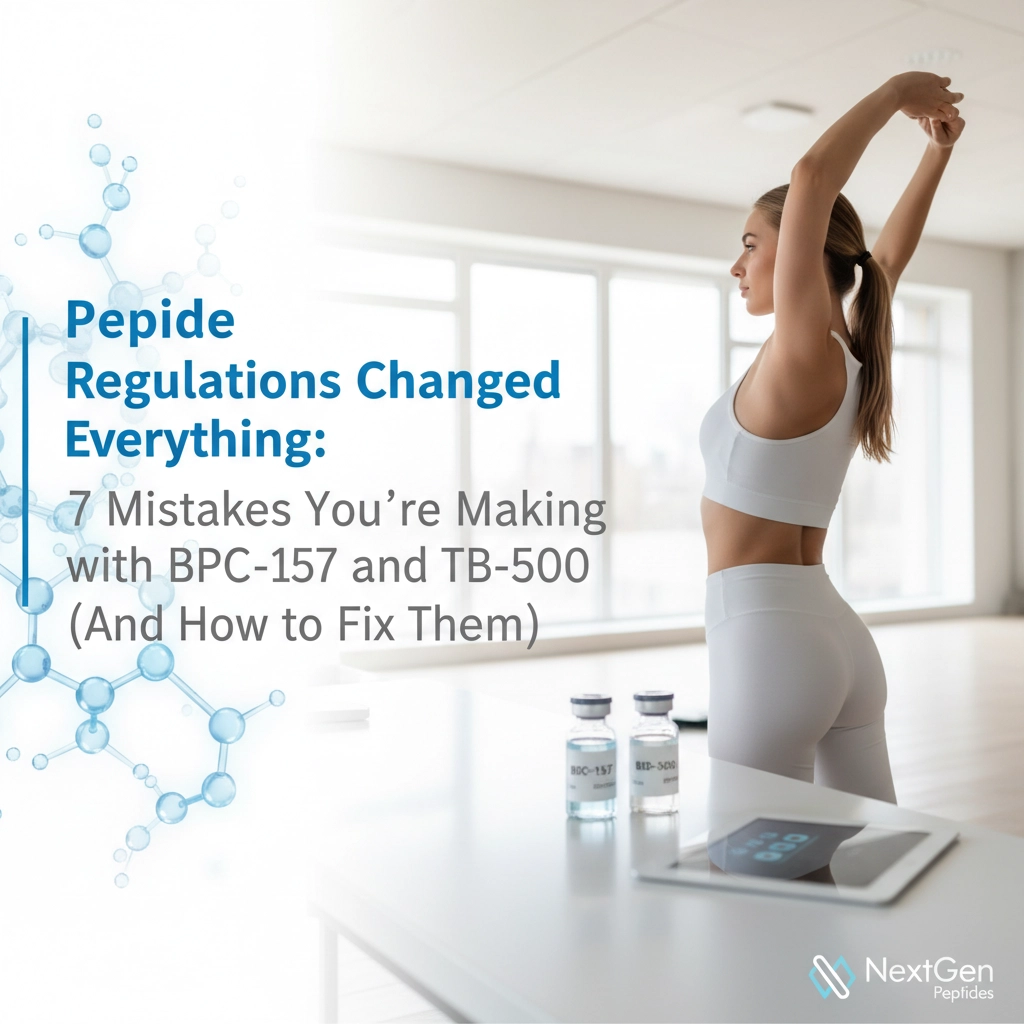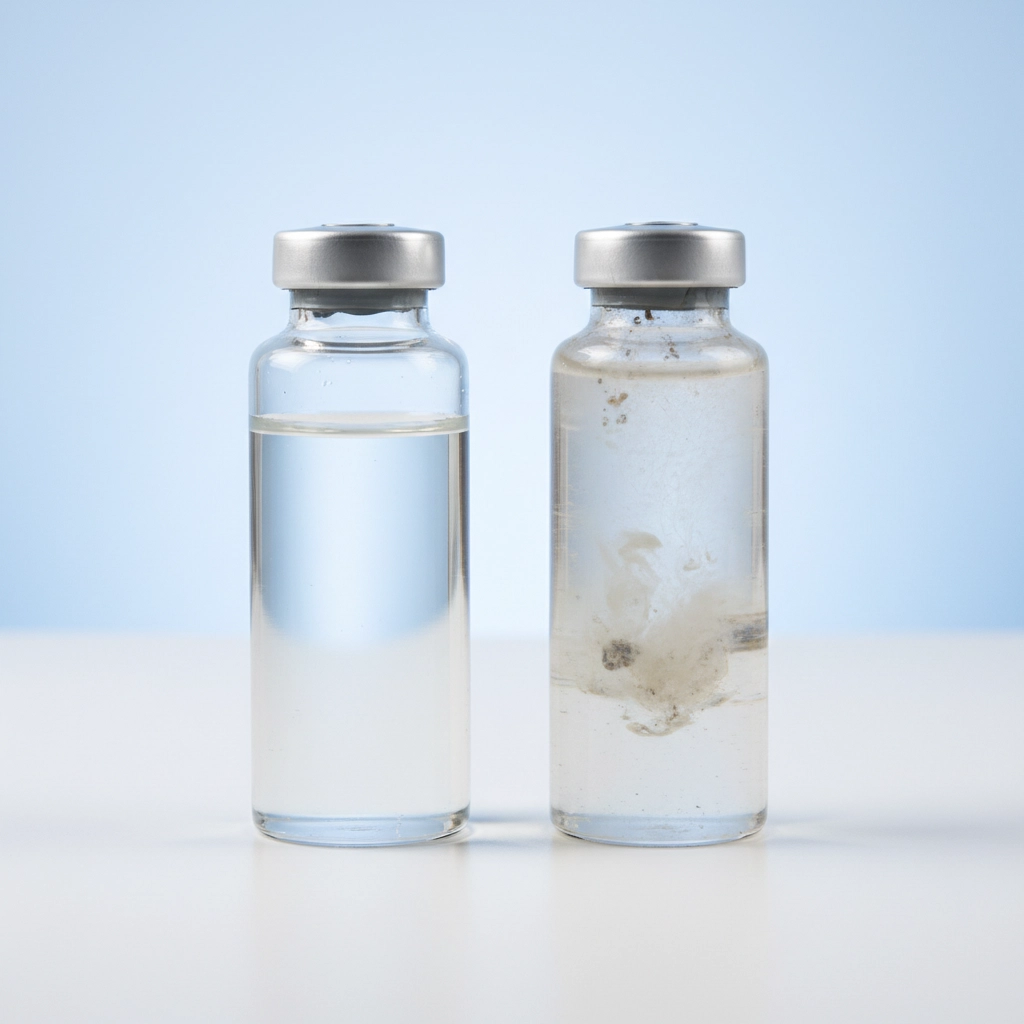Peptide Regulations Changed Everything
Oct 14th 2025
7 Mistakes You're Making with BPC-157 and TB-500 (And How to Fix Them)

The peptide landscape isn't what it used to be. If you've been using BPC-157 or TB-500, or you're thinking about starting, the regulatory ground beneath your feet has shifted dramatically, and most people haven't gotten the memo.
The FDA's late 2023 decision to classify BPC-157 as a Category 2 substance with "significant safety risks" wasn't just bureaucratic red tape. It was a complete game-changer that banned legal compounding overnight. Add in the 2020 federal prosecution that hit Tailor Made Compounding with $1.79 million in forfeitures, and you've got a regulatory environment that's left thousands of users in legal and safety limbo.
Here's the uncomfortable truth: as of 2025, most BPC-157 and TB-500 circulating in the market exists in an unregulated gray zone that's actually pretty black and white, it's illegal for human use. But people are still buying, still injecting, and still making critical mistakes that could cost them their health, their money, or worse.
Let's break down the seven biggest mistakes we're seeing, and more importantly, how to navigate this new reality safely.

Mistake 1: Trusting "Research Chemical" Labels as Legal Protection
You've seen the disclaimers: "For research purposes only," "Not for human consumption," "Research chemical." Many users believe these magic words create some kind of legal loophole. They don't.
The FDA has been crystal clear, there's no legal basis for selling BPC-157 as a drug, food, or dietary supplement, regardless of how it's labeled. Those disclaimers aren't legal shields; they're marketing tactics that don't change the underlying violation of the Food, Drug, and Cosmetic Act.
The Fix: Accept that any BPC-157 or TB-500 you're purchasing for human use is coming from illegal sources. There are no gray areas here. The sooner you understand this, the better equipped you'll be to make informed decisions about your health and legal exposure.
Mistake 2: Assuming Quality and Purity Standards Still Apply
When legitimate compounding pharmacies were forced out of the BPC-157 game, quality control went with them. The FDA specifically cited concerns about peptide impurities when implementing the ban, and now you're dealing with a completely unregulated supply chain.
Think about it, when there's no regulatory oversight, there's no way to verify what's actually in that vial. Concentration could be off by 50%. Contamination could be present. You might not even be getting the peptide you paid for.
The Fix: Understand that you cannot verify the contents, concentration, or purity of unregulated peptides. This isn't just about legal compliance, it's about injecting unknown substances into your body. If you can't verify what you're using, you're essentially participating in human experimentation with a sample size of one.

Mistake 3: Following Social Media Dosing Protocols
Instagram influencers and Reddit forums are full of dosing recommendations, everything from daily 250mcg injections to monthly 5mg "megadoses." But here's what they won't tell you: because BPC-157 hasn't been extensively studied in humans, literally no one knows if there's a safe dose.
The FDA has explicitly stated it "lacks sufficient information to know whether the drug would cause harm when administered to humans." Every dosing protocol you see online is purely experimental and anecdotal.
The Fix: Recognize that all dosing recommendations are unvalidated human experiments. There's no scientifically established safe dosing protocol for BPC-157 or TB-500. If you're following advice from social media, you're participating in uncontrolled research with unknown risks.
Mistake 4: Ignoring Immune System Reactions
This one's crucial and often overlooked. The FDA flagged specific concerns about immune reactions when classifying BPC-157 as high-risk. These peptides can trigger immune responses that range from mild allergic reactions to serious immune-mediated complications.
Most users don't even know to watch for immune reactions. They attribute strange symptoms to stress, diet changes, or underlying conditions without considering that their peptide regimen might be causing an immunological response.
The Fix: If you're using these peptides, monitor for unexplained symptoms that could indicate immune reactions, skin changes, fatigue, joint pain, or any new symptoms that develop after starting peptides. Consider immune reactions as a possible cause rather than automatically attributing symptoms to other factors.

Mistake 5: Dismissing Cancer Pathway Concerns
Here's where things get really serious. The FDA mentioned "protumorigenic effects", cancer-promoting activities, as one reason for regulatory action against certain peptides. With minimal human clinical evidence and animal studies that can't predict human cancer risk, you're dealing with a complete unknown.
This isn't fear-mongering. It's a legitimate safety concern raised by federal regulators based on available data. The problem is that most users either don't know about these concerns or dismiss them as regulatory overreach.
The Fix: Anyone with personal or family cancer history should be especially cautious. The carcinogenic potential is completely unknown because long-term human studies don't exist. This uncertainty should be factored into any risk-benefit analysis you're making about peptide use.
Mistake 6: Athletes Playing Russian Roulette with Their Careers
BPC-157 is explicitly prohibited under the World Anti-Doping Agency (WADA) list as an unapproved substance. Yet athletes at all levels, collegiate, professional, Olympic, continue using these peptides for injury recovery without understanding the career-ending implications.
A positive test doesn't care about your therapeutic intent or injury recovery goals. It's a violation, period.
The Fix: If you're subject to any level of athletic drug testing, understand that BPC-157 use will result in a positive test and potential sanctions. There are no exceptions for therapeutic use because these substances aren't approved for any therapeutic use.
Mistake 7: Buying Into "Natural" Marketing Claims
The marketing around BPC-157 often emphasizes its "body protection compound" origins, implying it's somehow natural and therefore safer. This is misleading at best, dangerous at worst.
BPC-157 is not a dietary ingredient. It's classified as an unapproved drug by the FDA. The synthetic versions being sold online have unknown relationships to any naturally occurring peptides, and "natural" doesn't equal safe anyway, plenty of natural compounds are toxic or dangerous.
The Fix: Recognize that synthetic peptides are pharmaceutical compounds without established safety profiles, not natural supplements. The minimal research available comes primarily from animal studies, not validated human clinical trials.

The Reality Check You Need
The regulatory crackdown isn't bureaucratic overreach, it reflects genuine safety concerns. The FDA's actions stem from insufficient human safety data, quality control issues, and specific documented risks.
As of 2025, accessing these peptides means participating in an illegal market with zero quality assurance and documented health risks. That's not opinion, that's regulatory reality.
For those genuinely seeking alternatives for injury recovery and tissue repair, working with licensed healthcare providers who can prescribe FDA-approved therapies remains the only legally and medically sound approach.
Yes, the anecdotal reports of healing benefits are compelling. But they don't outweigh the regulatory reality, safety uncertainties, and legal risks that now define this space. The peptide landscape has changed, and your approach needs to change with it.
Smart decisions require accurate information. Now you have it.
Learn more → link in bio.


